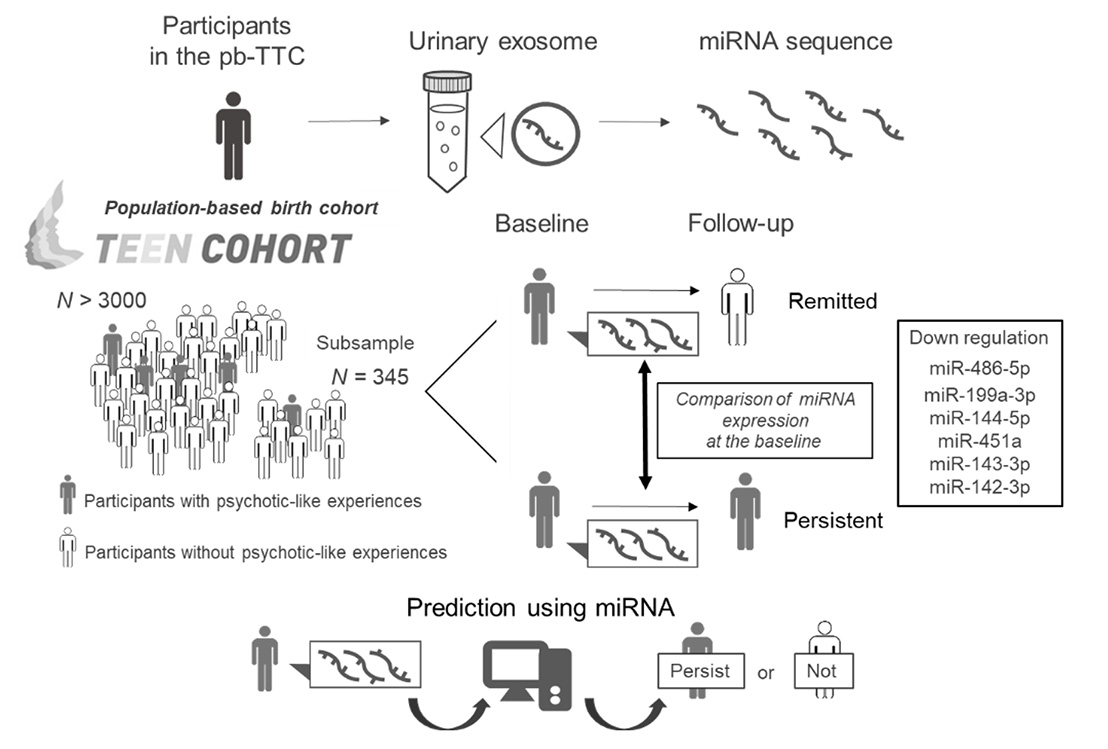
Tomita Y, Suzuki K, Yamasaki S, Toriumi K, Miyashita M, Ando S, Endo K, Yoshikawa A, Tabata K, Usami S, Hiraiwa-Hasegawa M, Itokawa M, Kawaji H, Kasai K, Nishida A, Arai M. Urinary exosomal microRNAs as predictive biomarkers for persistent psychotic-like experiences. Schizophrenia (Heidelb). 2023 Mar 11;9(1):14. doi: 10.1038/s41537-023-00340-5.
Psychotic-like experiences (PLEs) occur occasionally in adolescence and mostly disappear with increasing age. However, persistent type of PLEs is considered as a robust risk factor for subsequent psychiatric disorders. To date, only a few biological markers have been investigated for the prediction of persistent PLEs. This study newly identified urinary exosomal microRNAs that can serve as predictive biomarkers for persistent PLEs (Fig. 1).

Six miRNAs in urinary exosomes that were significantly altered in adolescents with persistent PLEs.
This study was part of a population-based biomarker subsample study of the Tokyo Teen Cohort Study. A total of 345 participants aged 13 (baseline) and 14 (follow-up) years underwent assessments of PLEs by experienced psychiatrists using semi-structured interviews. We defined the remitted group (i.e., individuals with PLEs at baseline and without PLEs at follow-up) and the persistent group (i.e., individuals with PLEs at both time points). We obtained urine at baseline and the expression levels of urinary exosomal miRNAs were compared between 15 individuals with persistent PLEs and 15 age- and sex-matched individuals with remitted PLEs. We constructed a logistic regression model to examine whether miRNA expression levels could predict persistent PLEs.
We found that six miRNAs (hsa-miR-486-5p, hsa-miR-199a-3p, hsa-miR-144-5p, hsa-miR-451a, hsa-miR-143-3p, and hsa-miR-142-3p) were differentially expressed between the persistent and remitted groups. In a logistic regression model of the combined these six miRNAs as explanatory variables, the model showed an AUC of 0.853, whereas univariate logistic models using a single miRNA as an explanatory variable showed an AUC ranging from 0.48 to 0.747. We found a subset of urinary exosomal microRNAs that were differentially expressed in persistent PLEs, and presented the likelihood that a microRNA-based statistical model could predict persistent PLEs with high accuracy.
Therefore, we suggest that urine exosomal miRNAs may serve as novel biomarkers for the risk of psychosis.